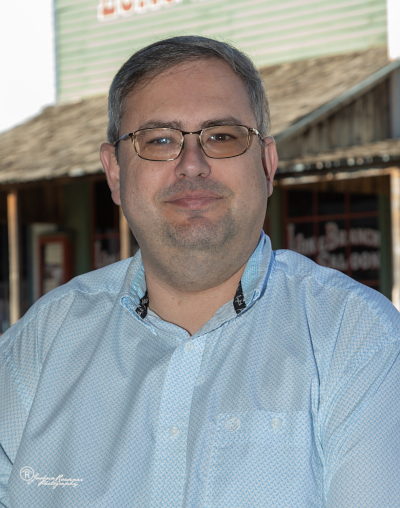
Old West history covers the Pony Express, the Santa Fe Trail, and the cattle drives, but little is told of the buffalo era. The wanton slaughter of the buffalo (bison) for their hides left the prairie marked by millions of tons of their bones -- the skeletal remains of an entire species. Keith Wondra, curator at Dodge City's Boot Hill Museum, will talk on how Dodge City grew on the growing buffalo hunting trade. Included will be the story of buffalo hunters and the businesses that depended on them.
Meet Keith Wondra
Keith Wondra is the curator at Boot Hill Museum in Dodge City, Kansas. He has written several books on Wichita and Kansas history including Kansas: In The Heart of Tornado Alley, "Where the Old West Comes to Life": The Story of Old Cowtown Museum and Wichita: 1930-2000. Along with the books, Mr. Wondra writes articles for the Dodge City Daily Globe. He is a native Kansan and an alumnus of Wichita State University with a Masters of Arts in History.
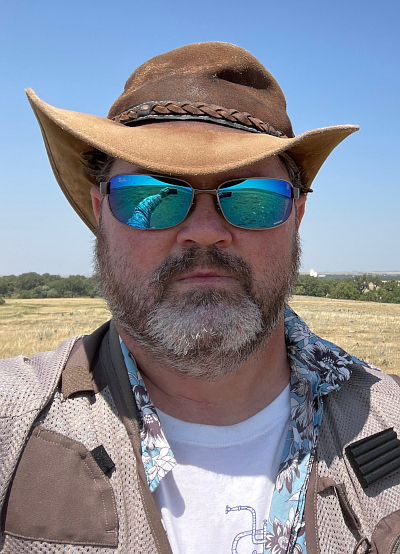
The program will discuss Ray's research in to the Cheyenne, Arapaho, and Lakota response to the Sand Creek Massacre centered on the First and Second Battle of Julesburg in 1865. Ray uses a multidisciplinary approach drawing from his training in history, geography, and archaeology combined with his training a military campaign planner to better understand the events of 1865 and the important role they played in shaping the next decade of U.S. government and settler relations with the Plains Indian Nations. He also works to utilize cutting edge technology such as thermal imagery and LIDAR in his research to better understand and recreate the battle space.
Meet Ray Sumner
Ray is a cultural resources coordinator for the Center for Environmental Management of Military Lands (CEMML) at Colorado State University where he is also completing his PhD in Anthropology. He is currently working to finish his dissertation and hopes to graduate in the Spring of 2026. He is also a retired U.S. Army Lieutenant Colonel who served 22 years on active duty serving 16 years overseas in Korea, Iraq, Kuwait, and Thailand. He spent the majority of his career as a Psychological Operations Officer stationed in the Republic of Korea. He holds a Masters of Arts in History with a Public History (Museum Studies & Historic Preservation concentration) from Colorado State University and a Master of Arts in History with Honors from American Military University. His thesis at AMU was on the expeditions of John Wesley Powell to the Colorado in 1867 and 1868 as well as Powell's exploration of the Green and Colorado Rivers through the Grand Canyon in 1869 and 1871-72.
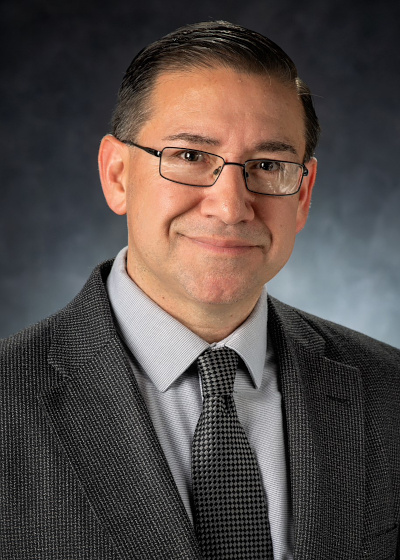
A few years after the Brown v. Board of Education case in 1954, African Americans actively sought to desegregate the Fort Worth Independent School District while simultaneously pushing for political representation at a time when all city council seats were elected at-large. Coincidentally, the rapidly growing Mexican community also fought for their own educational and political rights. At times, there was common ground among African Americans and Mexicans, but frequently they fought each other for power and civil rights. This presentation will address the quest for power in Fort Worth from the 1960s through the early twenty-first century, highlighting struggles and successes for both groups over a fifty-to-sixty-year period of time.
Meet Peter Martínez
Originally from San Antonio, Texas, Peter Martínez moved to the Fort Worth area in 1996. Dr. Martínez earned his bachelor's and master's degrees in history from the University of Texas at Arlington before completing his doctoral work at the University of North Texas in 2017, where he specialized in Mexican American History. His dissertation, Ready to Run: Fort Worth's Mexicans in Search of Representation, 1960 to 2000, was awarded "Best Dissertation in Tejano Studies" in 2018 by the Tejas Foco (or Texas Region) of the National Association for Chicana and Chicano Studies (NACCS).
Dr. Martínez has worked in higher education since 2013, and is currently professor of history at Tarrant County College, Northeast Campus. He is an active member of NACCS, the Alliance for Texas History, and the Organization of American Historians. He co-chaired the Tejas Foco of NACCS from 2021 to 2023 and he currently serves on the Texas Region's Executive Committee, where he represents the Dallas-Fort Worth area. He also co-founded Historians of Latino Americans (HOLA) Tarrant County in 2019 and he serves on the Advisory Board for Hola Texas magazine. In addition to his work in education and for the Mexican American community, Dr. Martínez has a wife of 21 years and three children, ages 18, 15, and 9.
State and federal entities of the relatively new United States may have set borders, but archaeological history does not. William Moore's book Arrow Points of Texas and Its Borderlands illuminates surviving archaeological material in the form of Native American arrow points commonly found in Texas and the surrounding regions. He has assembled the latest research on typology and distribution to produce this guide. Incorporating points found not only in Texas but also in the nearby areas of Arkansas, Oklahoma, New Mexico, Louisiana, and northern Mexico, this book provides, in the words of the foreword by noted lithic specialist John E. Dockall, "a much-needed synthesis of regional and chronological data that will be useful to professional and avocational archaeologists alike."
For our Westerners meeting, he will introduce artifact typology, explain the format of the book, clarify the difference between it and previous books on the topic, and provide specific examples.
Meet William E. Moore
William E. Moore is a retired professional archaeologist and former sole proprietor of Brazos Valley Research Associates (BVRA) in Bryan, Texas, where he currently lives. He is the author of several books including The Texas Calaboose and Other Forgotten Jails (Texas A&M University Press, 2019), as well as articles and national magazines. He is the sole living member of the Houston Archeological Society.
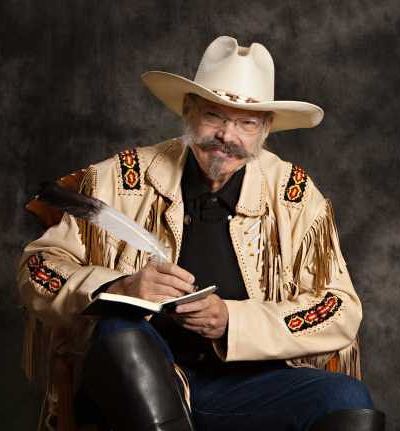
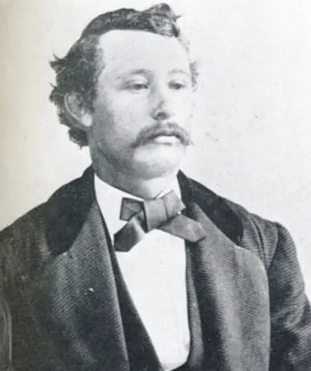
They came up from Texas driving cattle to Cochise County, Arizona, where they got paid off and spent their money on wine, women, song, and gambling, totally wasting the rest finding themselves with no way to get back. So, they took to herding other folks' cattle . . . without permission and then went after stagecoaches. Soon they discovered that three of the largest and wealthiest towns in the West, Tombstone, Bisbee, and Silver City, were prime pickin's. Take a close look at the outlaws and gunfighters who emerged in droves from southeast Arizona.
Meet Doug Hocking
Doug Hocking has completed advanced studies in American history, ethnology, and historical archaeology. Raised on the Jicarilla Apache Reservation, Doug retired from the US Army after serving in military intelligence and as an officer in the armored cavalry. He is the author of many award-winning books of Southwest history including Southwest Train Robberies, Terror on the Santa Fe Trail, a history of the Jicarilla tribe, Tom Jeffords, Friend of Cochise and Black Legend, about the Bascom Affair. He has won the Spur Award, the Will Rogers Medallion, the Co-founders' Award for Best History, and the Danielson for best presentation.
Bridles and Biscuits: Contraband Culture in Spanish East Texas, written by Gary L. Pinkerton in collaboration with Tom Gann, explores the complex economies and shifting structures of a borderland environment. In 1773, as residents of Los Adaes were abruptly forced to relocate to Béxar, the Spanish retreat from the region created a greater opening for unregulated trade among French, American, and Italian settlers. For five years before Spanish subjects resettled Nacogdoches in 1779, the people forced out of Los Adaes forged a new existence on the Trinity River in a place they called Bucareli. There, Antonio Gil Ibarvo solidified his role as a key figure in contraband trade. Through the story of Ibarvo's rise to become the leader of Nacogdoches and his subsequent arrest and removal from that post, Pinkerton demonstrates how the region that hosted the exiled Adaeseños "became the entry point for those with bigger goals than trading horses and skins."
Meet Gary Pinkerton
Gary L. Pinkerton is the Executive Director of the Alliance for Texas History (alliancefortexashistory.org). Since 2016 when he published Trammel's Trace: The First Road to Texas from the North, he has been actively engaged as an author, independent researcher, and web designer. He is a Fellow of the East Texas Historical Association and a former board member. He has published works in the Handbook of Texas, the Southwestern Historical Quarterly, and the Encyclopedia of Arkansas History and Culture. Gary has a Master of Social Work degree from the University of Houston and worked in human resources in his professional career.

When discussing the experiences of Unionists in Texas during the Civil War era, the scholarly focus has often been on persecution during and after the war. Similarly, the First Texas Cavalry, USA, has been described as mostly Germans or Mexicans, and the Texas Republican Party after Reconstruction is dismissed as an alliance of misfits and African Americans. The story of Francis A. Vaughan helps to correct both stereotypes. A native of Tennessee, raised in Mississippi among relatives who had dozens of slaves, Vaughan came to Texas with his family in 1853. He served with distinction in the First Texas, then prospered as a businessman and active Republican for decades after the war. Rather than being persecuted, he was elected several times to postwar offices.
Meet Dr. Richard McCaslin
Richard B. McCaslin, the Director of Publications for the Texas State Historical Association (TSHA), is the retired TSHA Professor of Texas History at the University of North Texas and the author or editor of nineteen books. Eight of these won awards, while his biography of Robert E. Lee was nominated for a Pulitzer. He is currently working on two co-authored works focused on the Civil War—a biography of a Texas Unionist and an analysis of the wartime Texas cotton trade--as well as a biography of Pompeo Coppini. a prolific sculptor whose public works in Texas include the Alamo Cenotaph. A Fellow of the TSHA and Admiral in the Texas Navy, McCaslin has commendations from the Civil War Round Tables in Dallas, Fort Worth, and Shreveport for his academic work.
From his earliest sketches of Texas cattle in 1876 until his death in 1945, Texas master Frank Reaugh dedicated his life and career to telling the stories of the great cattle drives from Texas to points north. He collaborated wiith writer Clyde Walton Hill and composer David Guion to create one of the first performance-art pieces in Texas and in the United States in 1933. Reaugh's Twenty-Four Hours with the Herd debuted in Oak Cliff in 1933 and was performed in Waco and at the Texas Centennial Exposition in Dallas in 1936. The San Angelo Museum of Fine Arts assembled an abbreviated version of Twenty-Four Hours with the Herd in 2021. This presentation will show the 2021 version with commentary by Michael R. Grauer, authority on Frank Reaugh and author of Rounded Up in Glory: Frank Reaugh, Texas Renaissance Man.
Meet Michael Grauer
Mr. Grauer holds a Bachelor of Fine Arts in painting and a Bachelor of Fine Arts in art history from the University of Kansas; Master of Arts in art history from Southern Methodist University; and Master of Arts in history from West Texas A&M University. Beginning his career at Smithsonian American Art Museum in 1984, he was curator of art and Western heritage at Panhandle-Plains Historical Museum for 31 years. He was recruited to become McCasland Chair of Cowboy Culture and curator of cowboy collections and Western art at the National Cowboy & Western Heritage Museum where he worked for six years. He has curated over 160 exhibitions and authored over 75 publications on art, culture, and history of the American West. He taught at West Texas A&M University for over twenty years. He was the 2012 University of Kansas Department of Art History's distinguished alumnus. He was inducted into the Kansas Cowboy Hall of Fame at Dodge City, Kansas, as Cowboy Historian for 2021.
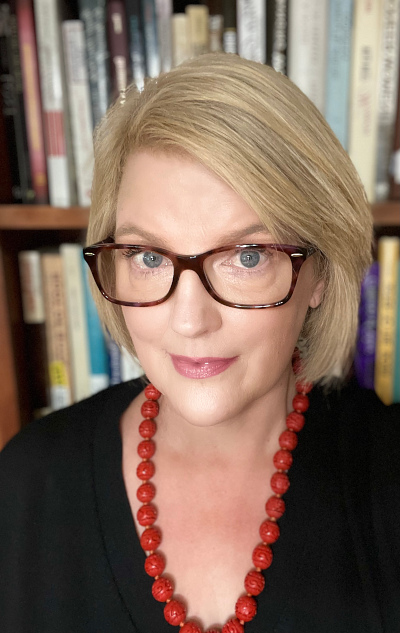
During the American Civil War women and children in the Cherokee Nation suffered tremendously. Hannah Worcester Hicks, the daughter of famed missionary Samuel Austin Worcester, and her Cherokee husband Abijah Hicks lived near Fort Gibson as the war raged in the western Ozarks. Hannah's diary provides community members, her descendants, and scholars with insight into the chaos of war in the Ozarks, the important connections between the Cherokee Nation's citizens and communities like Van Buren and Fort Smith, and the intense division at work in the Cherokee Nation at a critical time for the nation's survival. The Hicks' tragic story illustrates the human cost of war in Indigenous nations and western Ozark communities.
Meet Dr. Michelle M. Martin
Dr. Michelle M. Martin is a Michigander by birth and a Kansan and Okie by choice. Martin is a historian who earned her doctorate at the University of New Mexico in May 2022. Her research probes interracial marriage, gender, race, and power in the Mvskoke Nation in the Indian Territory from 1870-1897.
She earned her B.A. and M.A. degrees in history at Western Michigan University. After graduating, Martin embarked on a nearly twenty-year career in academic and public history. For nine years she taught full and part time at the two and four year college level in Kansas and Oklahoma. She also worked in the television and film industry for nearly ten years as a researcher, script writer, and field producer. Projects she has contributed to have aired on PBS, A&E, History Channel, Investigation Discovery, and at National Park Service units in Kansas, Missouri, and Arkansas. For several years Martin worked as a museum director, and she has served on numerous museum boards and has provided consulting services for small museums in Kansas and Oklahoma. Martin has also lectured on various historical topics across the country for museums, state and national historic sites, and educational institutions.
Her research interests include the intersections of gender, race, and ethnicity in the U.S. West from 1800-1900, the history of Indigenous-Euro American relations in the Indian Territory (in the Mvskoke and Semvnole Nations specifically) from 1840-1925, interracial marriage and families in the United States during the eighteenth and nineteenth centuries, and gender and race based violence in the West.
She is currently an Assistant Professor of History and the Coordinator of the Public History Certificate in the Department of History at Northeastern State University in Tahlequah, Oklahoma. Tahlequah is the capital of the Cherokee Nation of Oklahoma and the United Keetoowah Band of Cherokee.
Martin lives in Tahlequah and is a proud cat mamma to Josie. Her husband, Dr. Donald Fixico (Mvskoke/Semvnole/Shawnee/Sac and Fox) is a Distinguished Foundation Professor and Regents' Professor of History at Arizona State. The couple travel back and forth between their two homes. When not working, Michelle enjoys hiking, travel, photography, documenting severe weather, watching college and professional football, and volunteering as a living history interpreter at various state and national historic sites.
Most publications on the Texas Revolution tend to focus on the major battles and notable events, but few concentrate on the Texian army's movements between the battles. Shortly after arriving in Gonzales to take command of the gathered Texian forces there, General Sam Houston learned that the Alamo had fallen. Realizing that his small force was in no condition to meet the full force of the Mexican army, he ordered a rapid withdrawal of the army to the Colorado River while also escorting panicked civilians. When Mexican forces arrived opposite the Texian army on this formidable river, a pivotal battle seemed imminent. After days of nervous anticipation, Texian soldiers were stunned to unexpectedly hear that General Houston was ordering a withdrawal from the Colorado. 11 Days on the Colorado provides a day-by-day account of events during and after the withdrawal to the Colorado and will reveal Houston's mindset during this time and offer explanations for some of his curious decisions.
Meet James E. Brasher
James E. Brasher earned an advanced degree in geology from Texas A&M University. He worked for the past 40 plus years in the oil industry and then groundwater conservation and has written several technical articles on subsurface geology. James, a native of Weimar and current resident of Columbus, Texas, is a descendant of one of Stephen F. Austin's Old 300.
James' affinity for historic research was borne in part from his assistance in researching figures from the past for Amanda Danning, his wife and a renowned forensic sculptor. One notable project was the work by Amanda on facial reconstructions of some Mexican soldiers from the battlefield of San Jacinto. James soon afterward authored a magazine article about the Texian's withdrawal from Gonzales to the Colorado River after the fall of the Alamo which served as a forerunner to this book. Amanda Danning provided illustrations for the book.
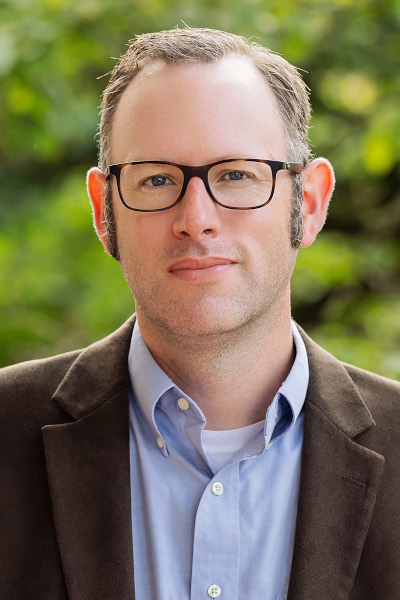
Years of building tensions on the southern plains culminated in the Red River War of 1874-1875. The large-scale theft of horses and cattle was one of the leading causes of the conflict. Systems of theft overlapped and reinforced each other. Comanches and Kiowas from the Staked Plains and their reservation in Indian Territory raided frontier herds with growing intensity during the late 1860s and early 1870s. New Mexican traders and government officials helped incentivize these forays by offering a reliable market for stolen stock. Simultaneously, white rustlers from Texas struck Indian herds north of the Red River. Stock thieves from Kansas also wreaked havoc on the Cheyenne and Arapaho Reservation. Until 1874, the federal government was largely ineffective at suppressing the theft of horses and cattle on the southern plains. Rivalries over jurisdictional boundaries, vigorous policy disagreements, and market economics combined to limit the government's effectiveness in dealing with the emerging crisis. Not until the army crushed the military power of the Cheyennes, Comanches, and Kiowas would horse and cattle herds in Indian Territory and northwest Texas be relatively safe from large-scale rustling.
Meet David Beyreis
David Beyreis is a historian of the Great Plains and Southwest borderlands. He is the author of Blood in the Borderlands: Conflict, Kinship, and the Bent Family, 1821-1920, which received the Gaspar Perez de Villagra Award from the Historical Society of New Mexico and the Louise Barry Writing Award from the Santa Fe Trail Association. His journal articles have received the Coke Wood Award for Best Historical Monograph or Article from the Westerners International, Western Heritage Wrangler Award from the National Cowboy & Western Heritage Center, and Spur Award from the Western Writers of America. His current book project is tentatively titled Soldier Girls: Native Women and the Wars for the Great Plains and is under contract with the University of Nebraska Press. He teaches history and government at Saint Mary's School in Raleigh, North Carolina. He is a member of Fort Worth Westerners.